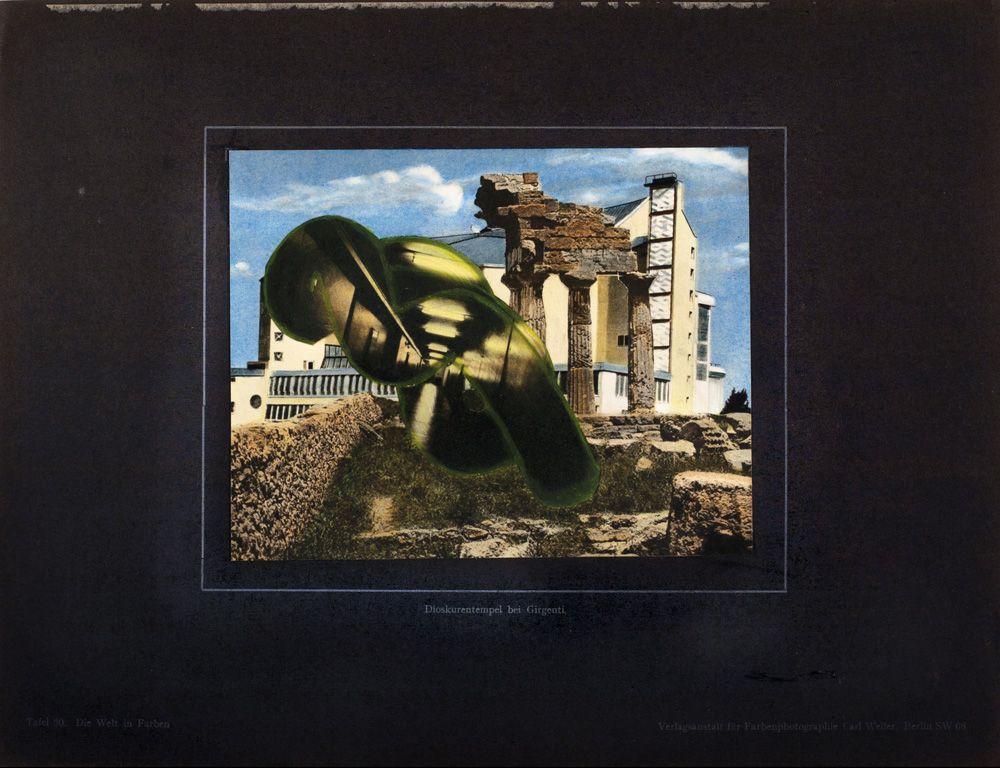In the late 1960s, Swiss artist Dieter Roth received a postcard of London’s Piccadilly Circus from Rita Donagh, the wife of fellow artist Richard Hamilton. In the 10 years that followed, Roth produced dozens of prints, jigsaw puzzles and mixed-media works, including his well-known 6 Piccadillies portfolio (1969–70), inspired by this image.
In a similar vein, Alberta-based Wil Murray’s latest body of work, Die Welt in Farben (2014), finds inspiration in commercial travel imagery. A few years ago, while living in Berlin, Murray purchased an early 20th-century souvenir album, containing photographs of historic ruins and bucolic landscapes, at an Unter den Linden flea market. Because early camera equipment was too cumbersome to transport between destinations, such books were produced as keepsakes for travellers making grand tours of Europe. Picturesque views of Salzburg, Budapest and Nuremberg are among those in the book.
The ambitious suite of 41 hand-tinted photographs resulting from Murray’s flea-market discovery examines the relationship between photography, painting and collage. The artist collaged elements, many from similar sources, on top of the book’s original photographs, obscuring the scenes pictured in the underlying images. He then had the collages re-shot and reprinted in black and white and hand-tinted the prints, employing vintage Marshall’s Photo Oil and techniques similar to those used at the turn of the previous century to add colour to photographs. (Each print in the series is unique, and the collages on which they are based remain together in the original book.)
Those familiar with Murray’s work will recognize many of the formal elements found in his highly sculptural paintings. The new collages share their riotously layered compositions that blur the distinction between foreground and background. For example, several irregularly shaped collaged elements look as if they are draped like fabric over a view of the Amalfi Coast in Tafel 8: Amalfi, while a jostling pile of brushstrokes and collaged shapes cover a birds-eye view of Palermo in Tafel 14: Palermo.
An air of nostalgia pervades the series despite the visual complexity and playfulness of its individual pieces. Perhaps this can be attributed to the muted palette of the prints, the images of Europe before it was plunged into two World Wars or the gallery’s presentation of these vintage photographs in a tight, grid-like arrangement, which brings to mind the melancholic photo-based installations of Christian Boltanski. In the end, Murray’s project subtly evokes the passage of time.
This is a review from the Fall 2014 issue of Canadian Art. To read more from this issue, visit its table of contents.









